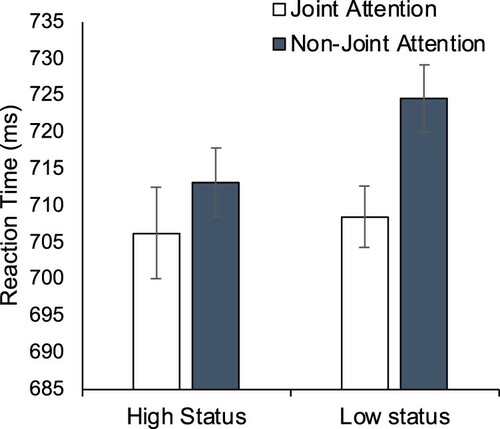Figures & data
Figure 1. Panel A: Example timecourse of displays presented in a single trial, progressing from left to right. The faces are examples of “low dominance” stimuli used in Experiments 1–3, and the example trial represents a congruent “joint attention” condition because the target appears on the face that followed the participant’s eyes to the object. Panel B: The left image illustrates an example of high physical-dominance faces and a threat related object, and the right image contains examples of the faces from Experiment 4.
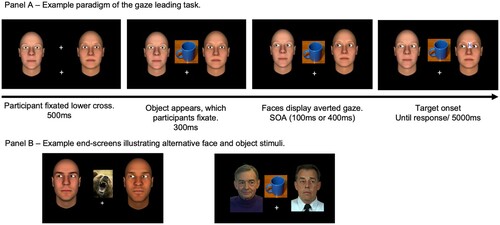
Figure 2. Mean reaction times (ms) in each condition in Experiment 1. Error bars are within-subjects standard error for the 3-way interaction term (Loftus & Masson, Citation1994).
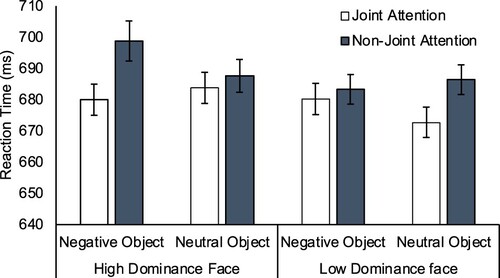
Figure 3. Mean reaction times (ms) for each condition in Experiment 2. Error bars represent within-subjects standard error of the interaction term.
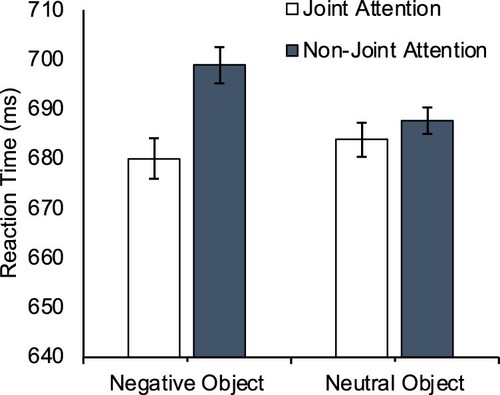
Figure 4. Mean reaction times (ms) for each condition in Experiment 3. Error bars represent within-subjects standard error of the interaction term.
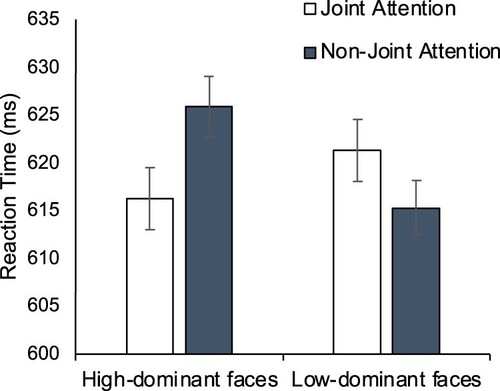
Figure 5. Mean reaction times (ms) for each condition in Experiment 4. Error bars represent within-subjects standard error of the interaction term.
